
The following are examples of orders of magnitude for different lengths.
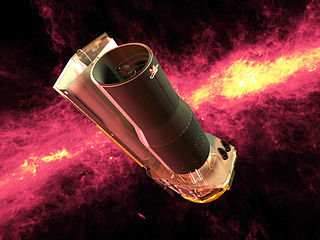
The Spitzer Space Telescope, formerly the Space Infrared Telescope Facility (SIRTF), was an infrared space telescope launched in 2003, that was deactivated when operations ended on 30 January 2020. Spitzer was the third space telescope dedicated to infrared astronomy, following IRAS (1983) and ISO (1995–1998). It was the first spacecraft to use an Earth-trailing orbit, later used by the Kepler planet-finder.

Nanobacterium is the unit or member name of a former proposed class of living organisms, specifically cell-walled microorganisms, now discredited, with a size much smaller than the generally accepted lower limit for life. Originally based on observed nano-scale structures in geological formations, the status of nanobacteria was controversial, with some researchers suggesting they are a new class of living organism capable of incorporating radiolabeled uridine, and others attributing to them a simpler, abiotic nature. One skeptic dubbed them "the cold fusion of microbiology", in reference to a notorious episode of supposed erroneous science. The term "calcifying nanoparticles" (CNPs) has also been used as a conservative name regarding their possible status as a life form.

Satellite images are images of Earth collected by imaging satellites operated by governments and businesses around the world. Satellite imaging companies sell images by licensing them to governments and businesses such as Apple Maps and Google Maps.

Barium fluoride is an inorganic compound with the formula BaF2. It is a colorless solid that occurs in nature as the rare mineral frankdicksonite. Under standard conditions it adopts the fluorite structure and at high pressure the PbCl2 structure. Like CaF2, it is resilient to and insoluble in water.

Mycolicibacter arupensis is a slowly growing mycobacterium first isolated from soil and human sputum samples in Spain. Etymology: arupense, pertaining to the ARUP Institute for Clinical and Experimental Pathology, where the type strain was characterized.
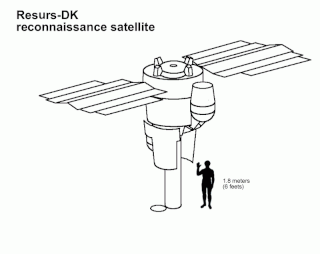
Resurs-DK No.1, also called Resurs-DK1, was a commercial Earth observation satellite capable of transmitting high-resolution imagery to the ground stations as it passed overhead. The spacecraft was operated by NTs OMZ, the Russian Research Center for Earth Operative Monitoring.

The China–Brazil Earth Resources Satellite program (CBERS) is a technological cooperation program between Brazil and China which develops and operates Earth observation satellites.

The absorption of electromagnetic radiation by water depends on the state of the water.

Cartosat-3 is an advanced Indian Earth observation satellite built and developed by Indian Space Research Organisation (ISRO), which replaces the Indian Remote Sensing Satellite (IRS) series. It has a panchromatic resolution of 0.25 metres making it one of the imaging satellite with highest resolution in the world at the time of launch and MX of 1 metre with a high quality resolution which is a major improvement from the previous payloads in the Cartosat series.
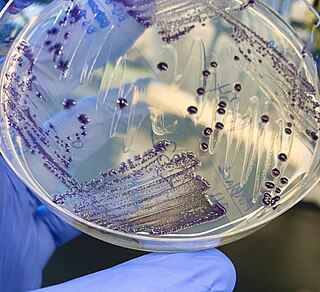
The genus Massilia is an outdated genus name of bacteria within the family Oxalobacteriaceae. All Massilia species were reclassified in 2023 into one of the following genera: Duganella, Pseudoduganella, Janthinobacterium,Telluria,Rugamonas,Mokoshia, or Zemynaea.
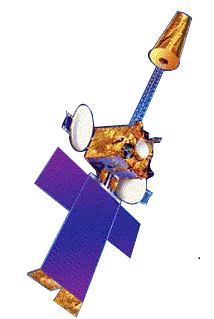
INSAT-3A, a multipurpose satellite built by ISRO was launched by Ariane in April 2003. It is located at 93.5 degree East longitude. It is third satellite in INSAT-3 series after INSAT-3B & INSAT-3C. Built at a cost of $53 mn, it provides communication, weather, and search and rescue services.
Telluria chitinolytica is a bacterium from the genus Telluria in the Oxalobacteraceae family.

Resurs-P is a series of Russian commercial Earth observation satellites capable of acquiring high-resolution hyperspectral (HSI), wide-field multispectral (MSI), and panchromatic imagery. These spacecraft cost over 5 billion rubles and are operated by Roscosmos replacing the Resurs-DK No.1 satellite.
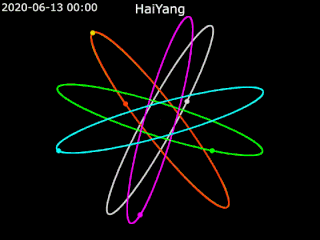
Haiyang is a series of marine remote sensing satellites developed and operated by the People's Republic of China since 2002. The name "Haiyang" translates to "ocean" in English. As of October 2022, eight satellites have been launched with ten more planned. Built by the state-owned aerospace contractor China Academy of Space Technology (CAST), Haiyang satellites carry a variety of ocean-imaging sensor payloads and are operated by the National Satellite Ocean Application Service (NSOAS), a subordinate agency of the State Oceanic Administration (SOA). Haiyang satellites are launched from Taiyuan Satellite Launch Center (TSLC) into Sun-synchronous orbit (SSO) aboard Long March-series rockets.

NOAA-8, known as NOAA-E before launch, was an American weather satellite operated by the National Oceanic and Atmospheric Administration (NOAA) for use in the National Environmental Satellite Data and Information Service (NESDIS). It was first of the Advanced TIROS-N series of satellites. The satellite design provided an economical and stable Sun-synchronous platform for advanced operational instruments to measure the atmosphere of Earth, its surface and cloud cover, and the near-space environment.
NOAA-10, known as NOAA-G before launch, was an American weather satellite operated by the National Oceanic and Atmospheric Administration (NOAA) for use in the National Environmental Satellite Data and Information Service (NESDIS). It was the third of the Advanced TIROS-N series of satellites. The satellite design provided an economical and stable Sun-synchronous platform for advanced operational instruments to measure the atmosphere of Earth, its surface and cloud cover, and the near-space environment.
NOAA-11, known as NOAA-H before launch, was an American weather satellite operated by the National Oceanic and Atmospheric Administration (NOAA) for use in the National Operational Environmental Satellite System (NOESS) and for support of the Global Atmospheric Research Program (GARP) during 1978–1984. It was the fourth of the Advanced TIROS-N series of satellites. The satellite design provided an economical and stable Sun-synchronous platform for advanced operational instruments to measure the atmosphere of Earth, its surface and cloud cover, and the near-space environment.
NOAA-12, also known as NOAA-D before launch, was an American weather satellite operated by National Oceanic and Atmospheric Administration (NOAA), an operational meteorological satellite for use in the National Environmental Satellite, Data, and Information Service (NESDIS). The satellite design provided an economical and stable Sun-synchronous platform for advanced operational instruments to measure the atmosphere of Earth, its surface and cloud cover, and the near-space environment.

Mariannaea elegans an anamorphic fungus. It is mainly found on rotting wood and soil. M. elegans is not pathogenic to humans, animals, or plants.
















